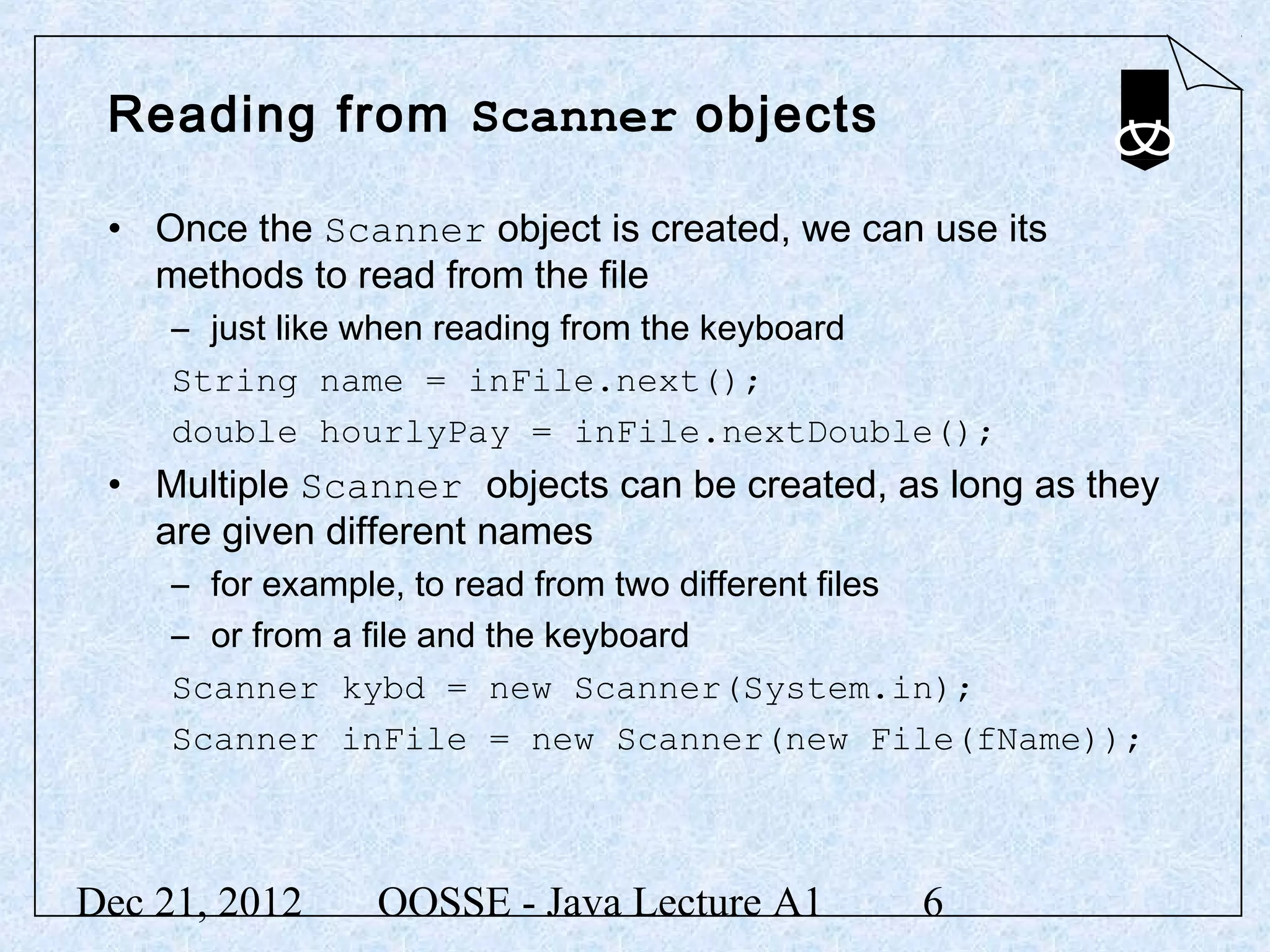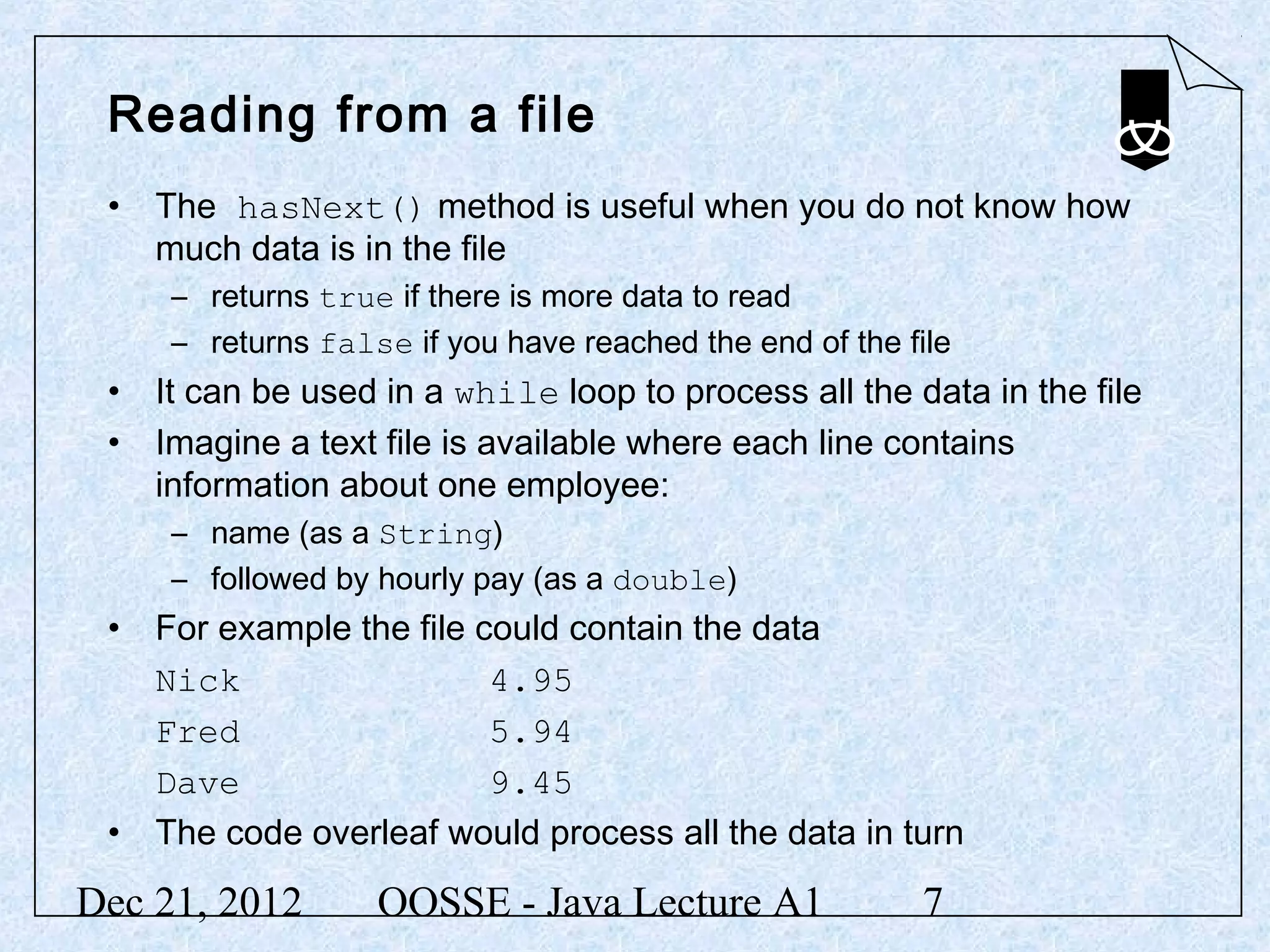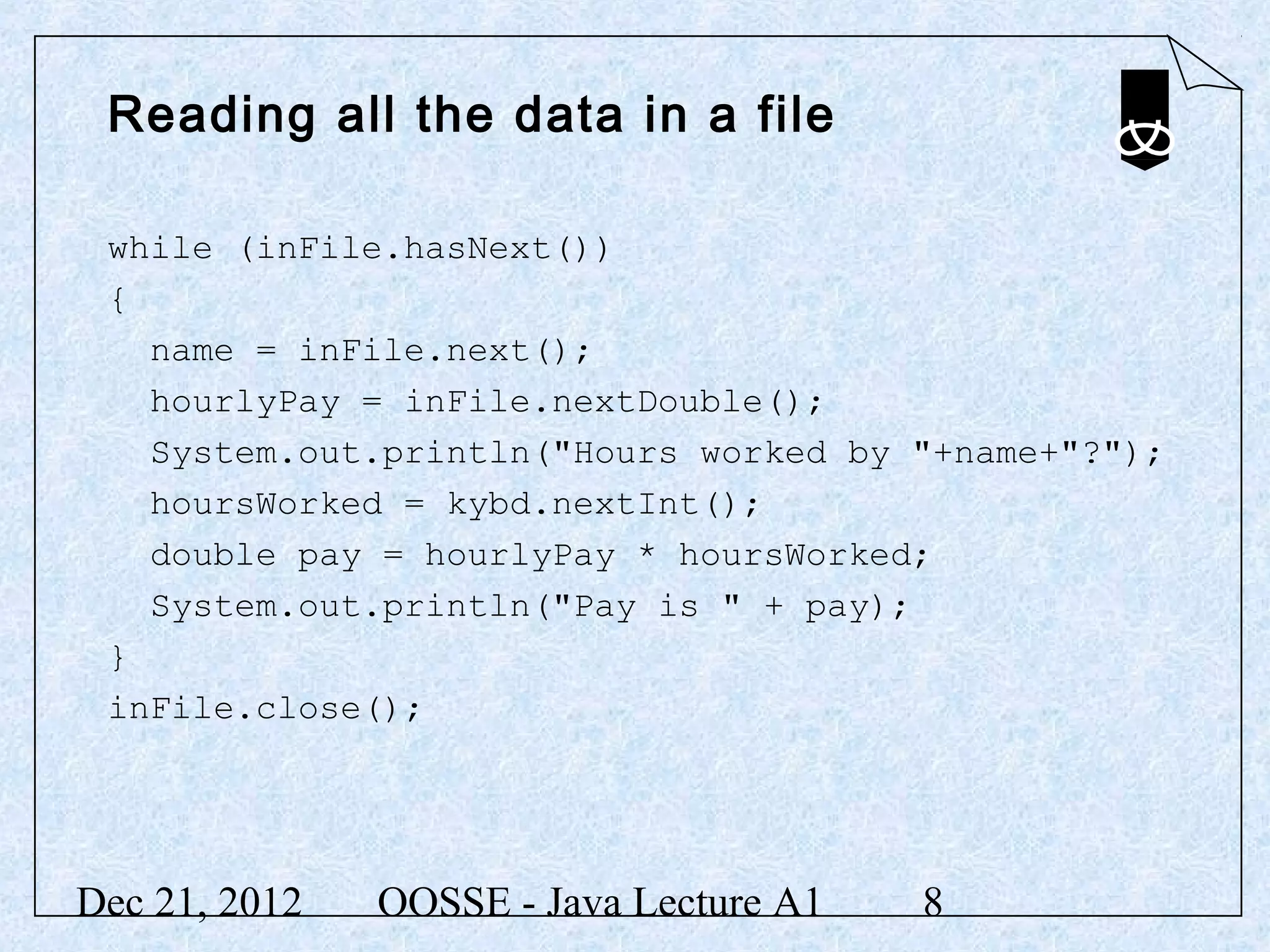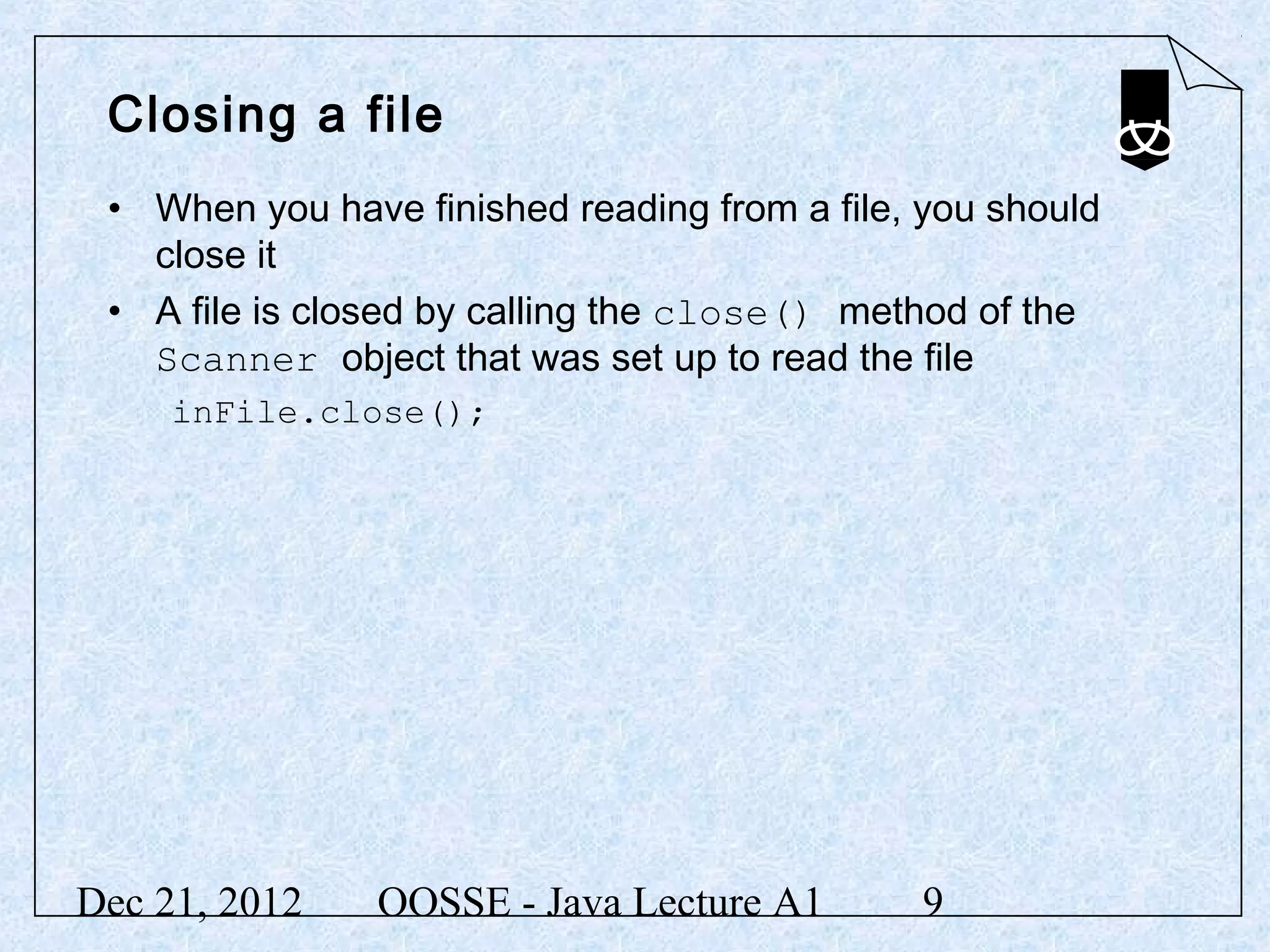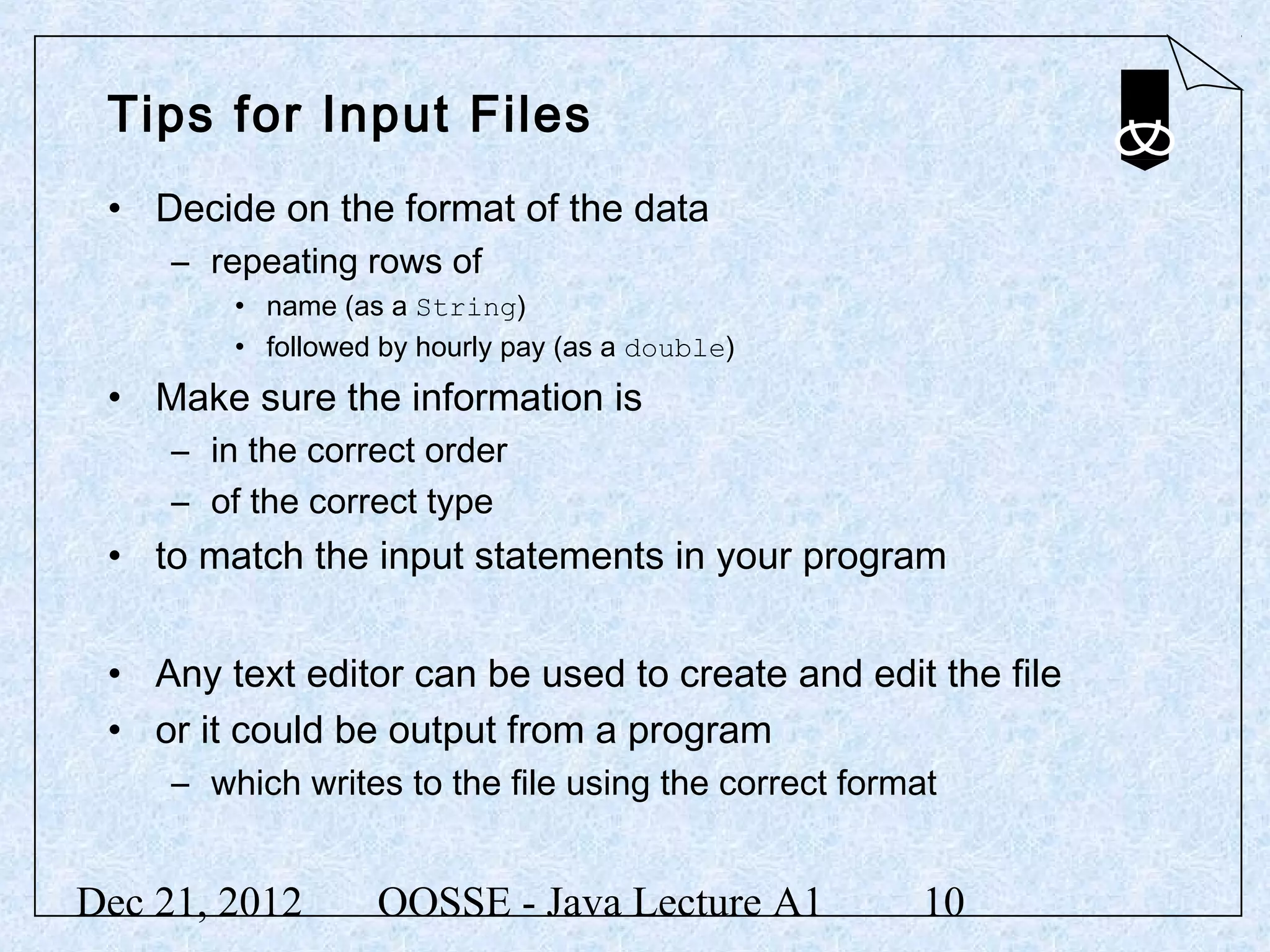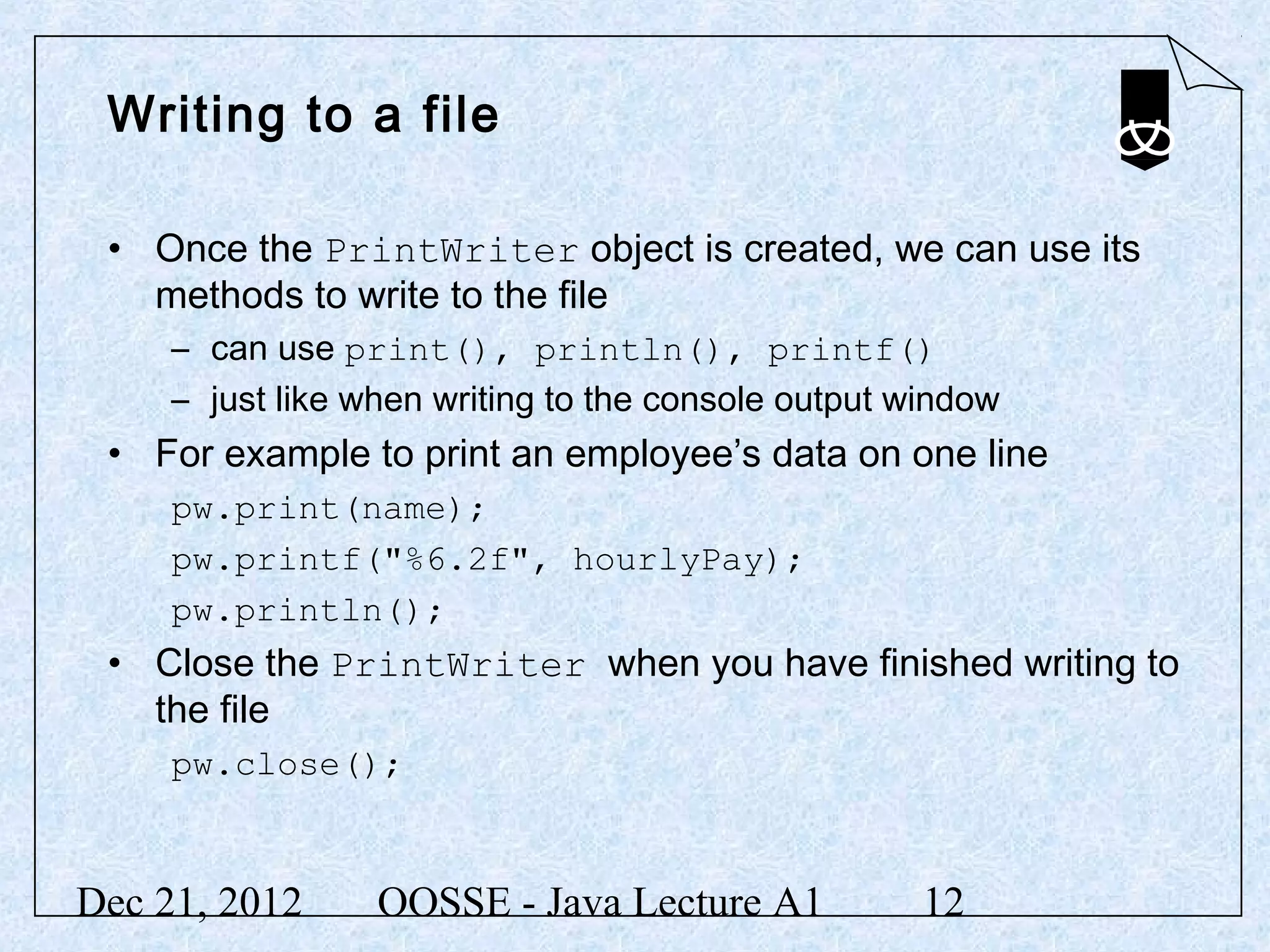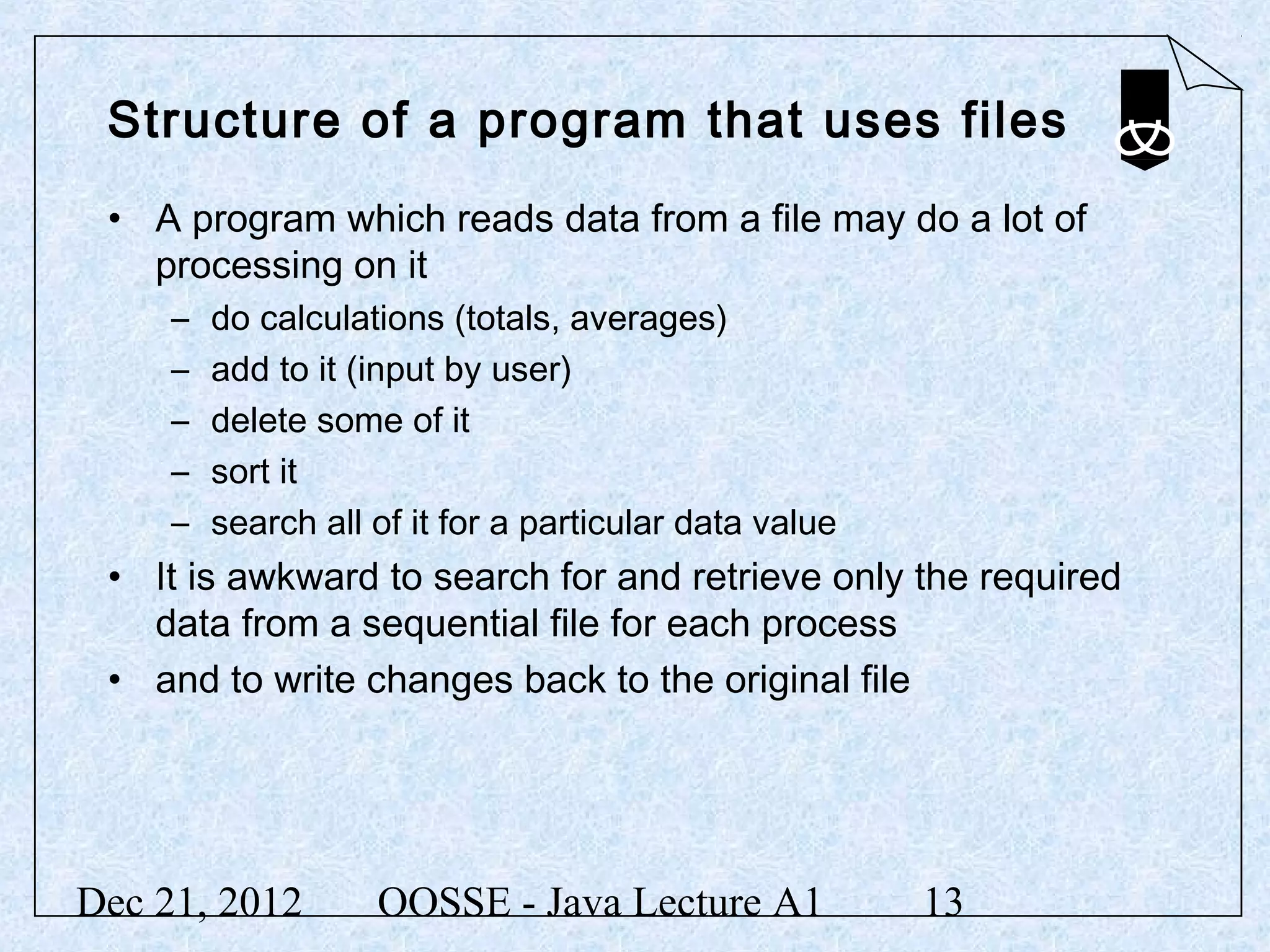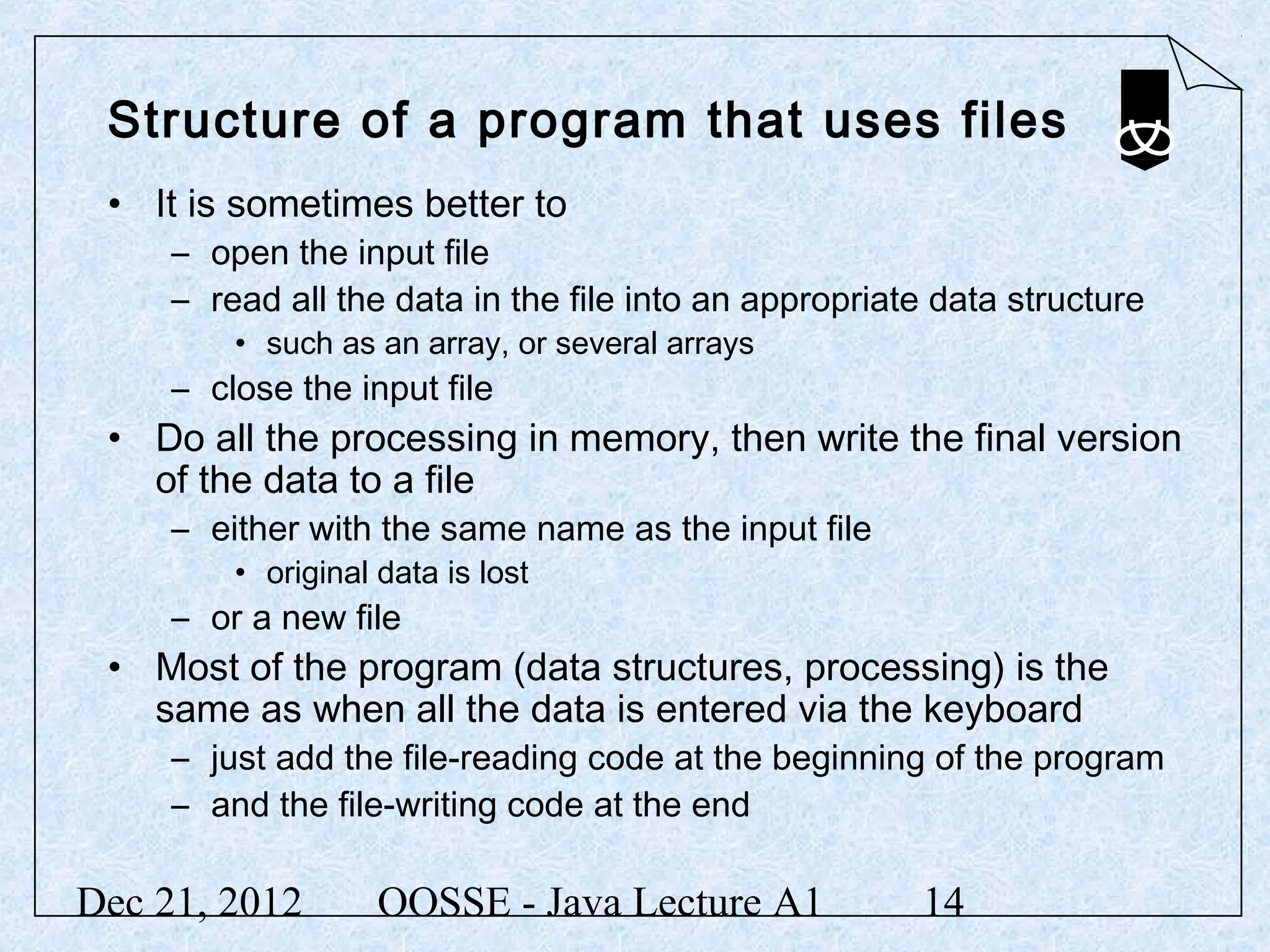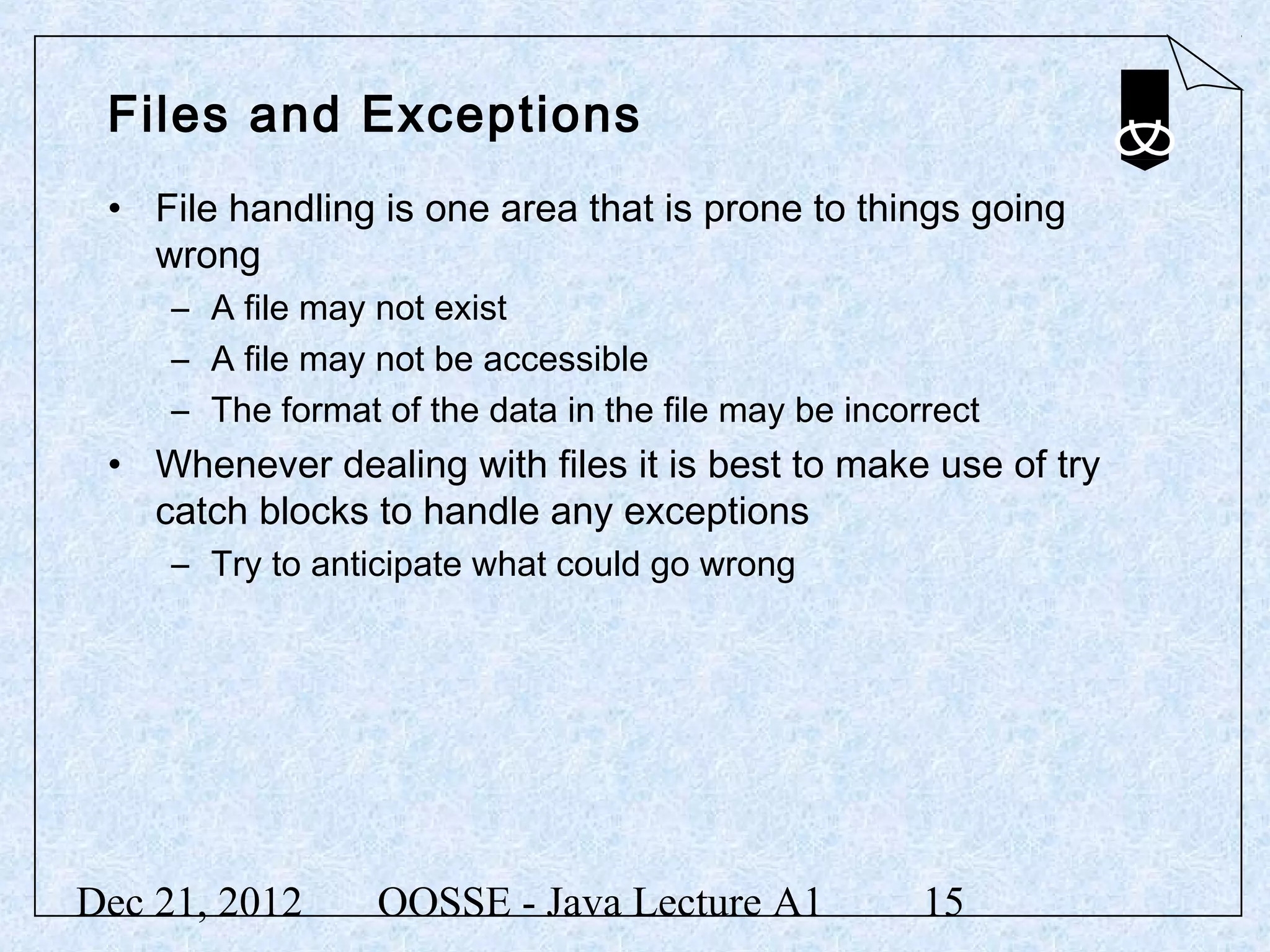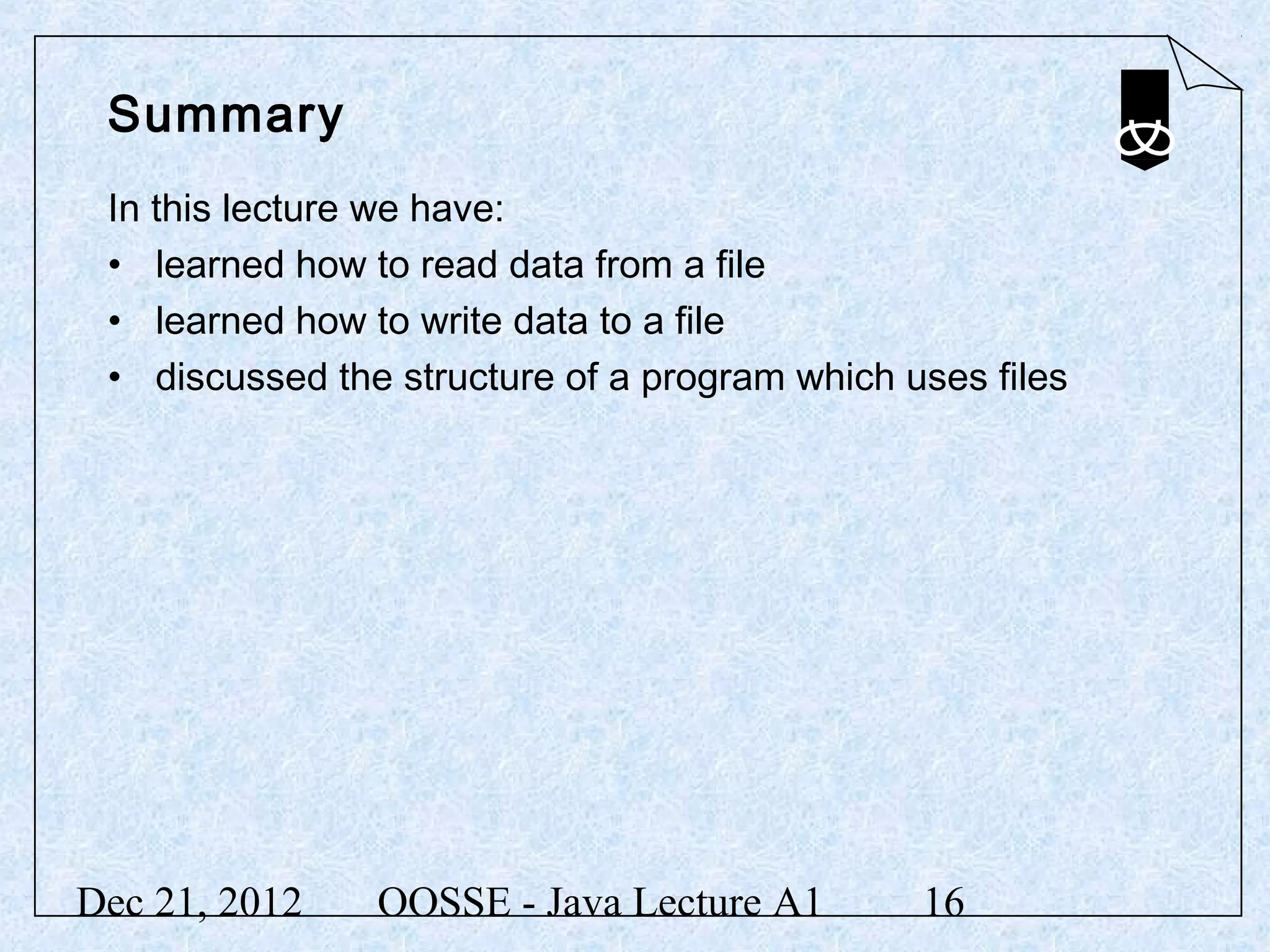This document discusses reading from and writing to files in Java programs. It explains how to open a file using a Scanner or PrintWriter object, read/write data using methods like next() and println(), and close the file when finished. It recommends storing file data in memory structures, processing it, then writing the results back to improve efficiency over sequential file access. Proper file handling and exception handling are also emphasized.
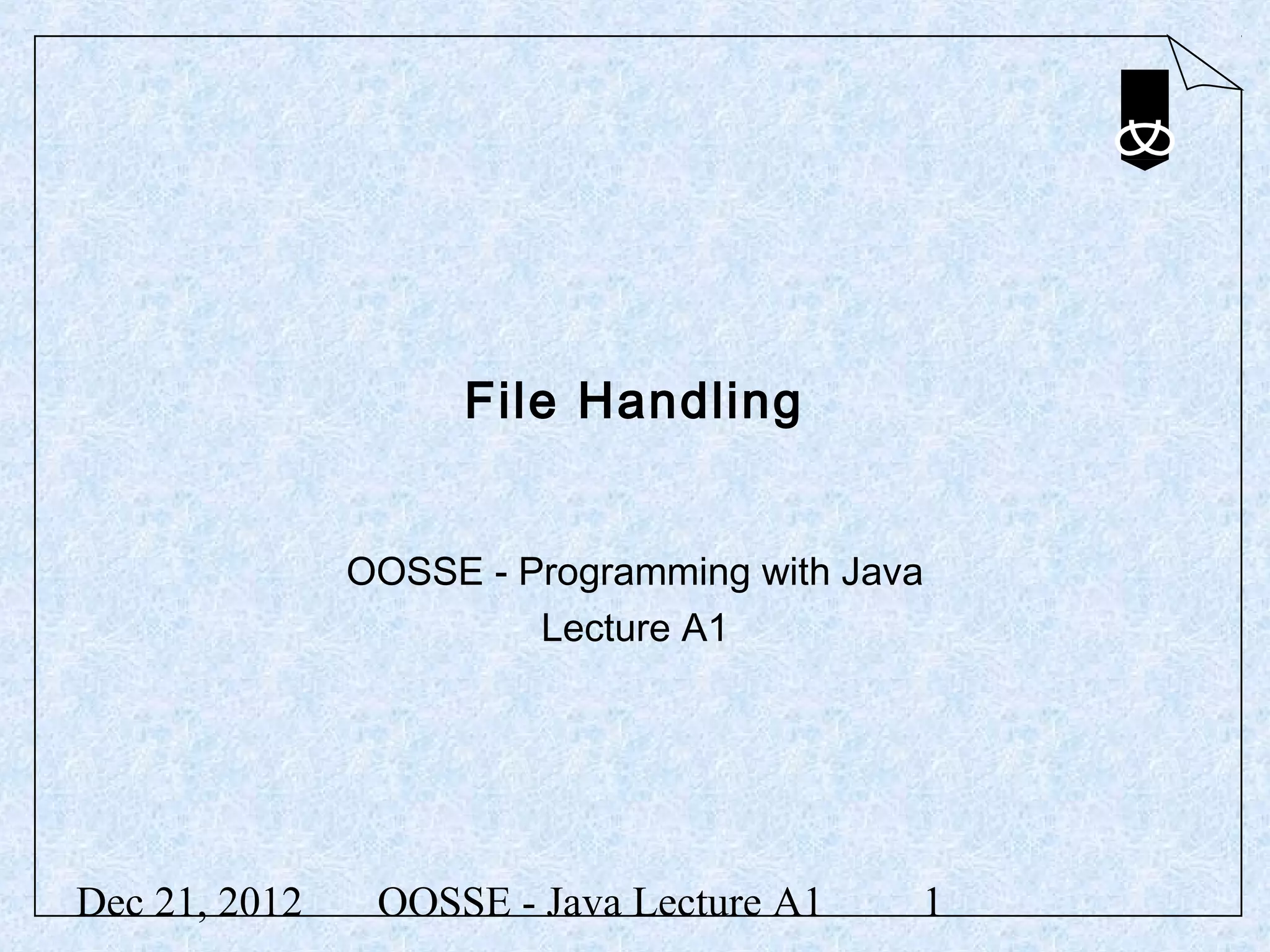
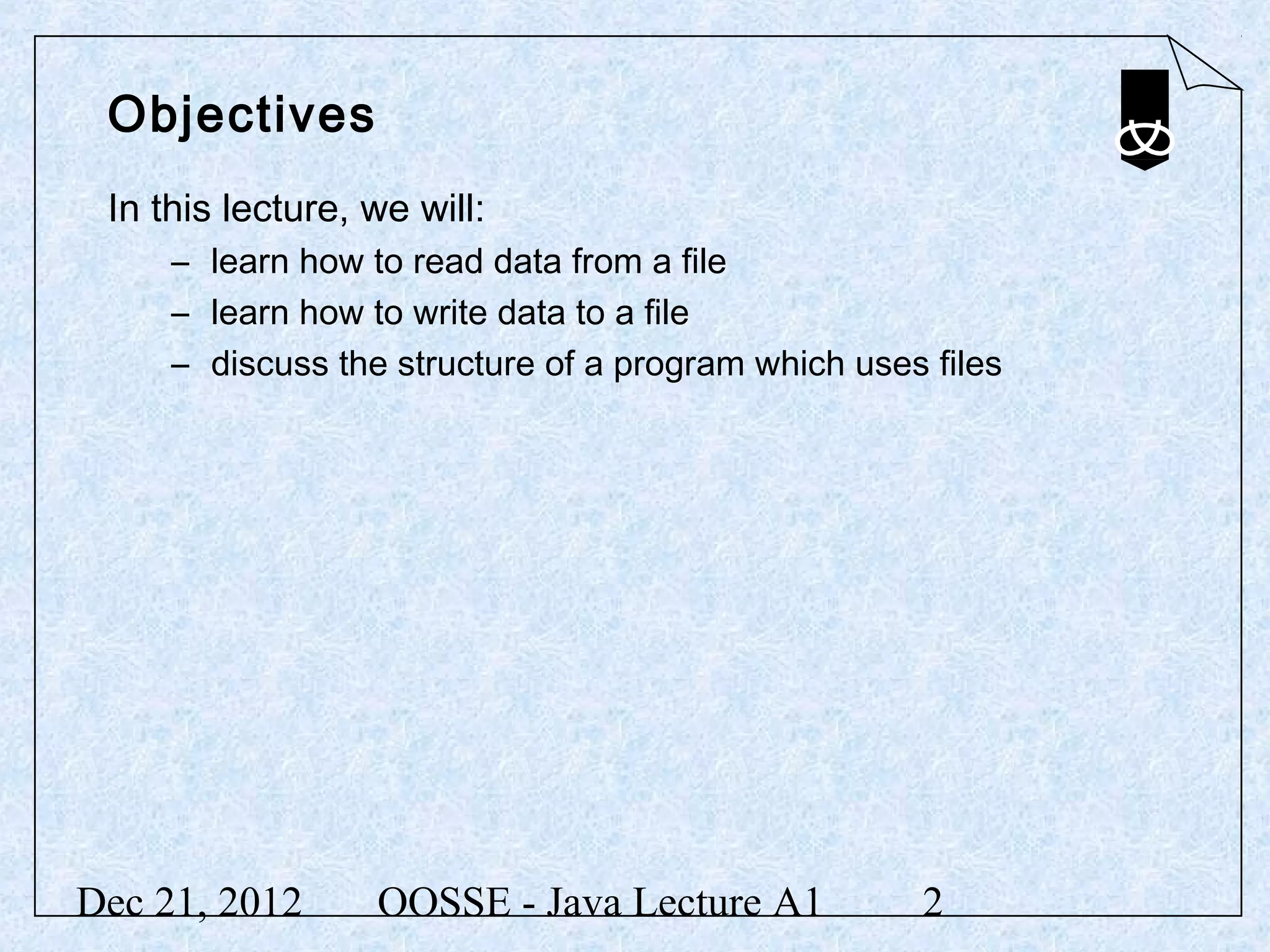
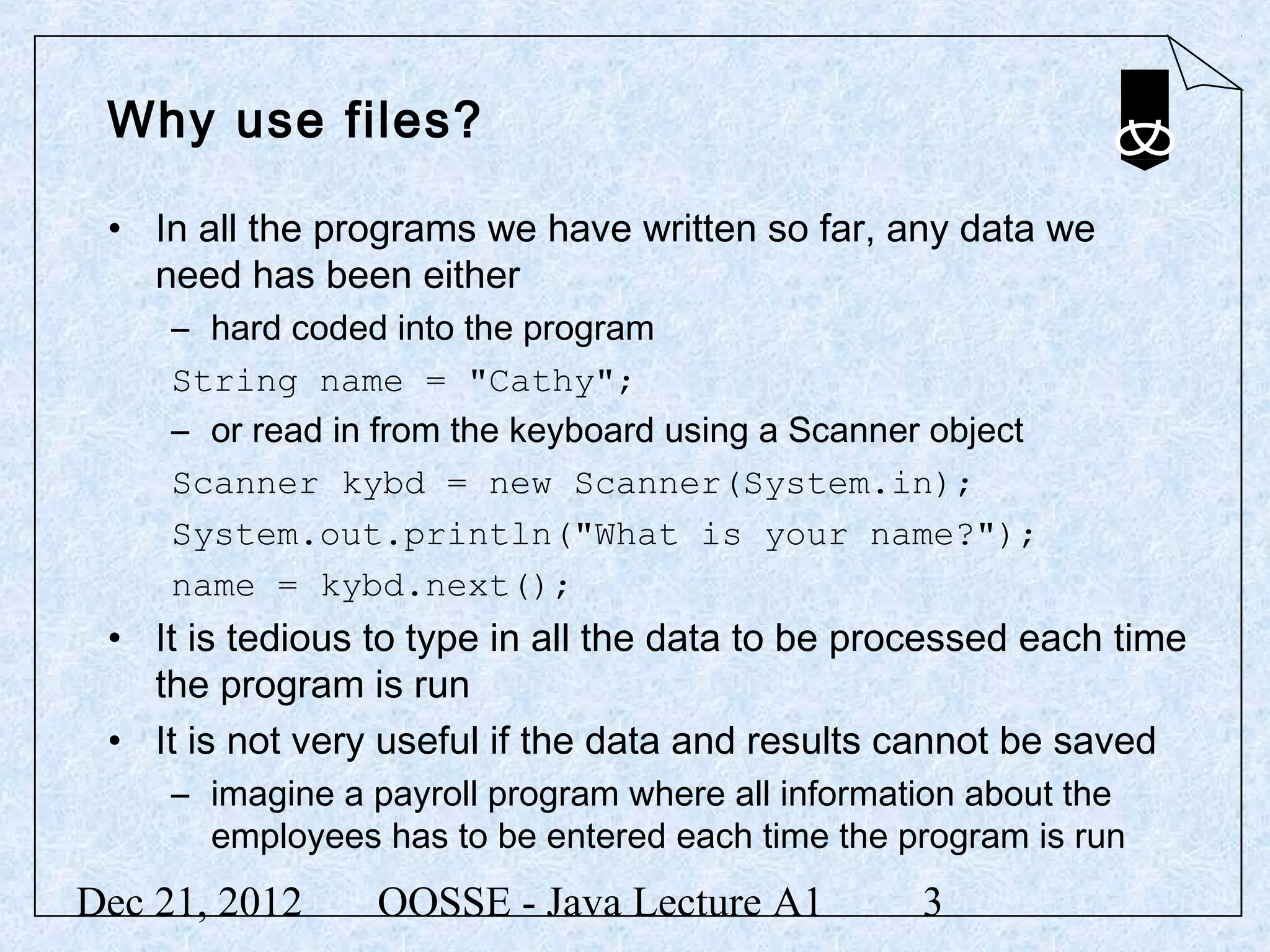
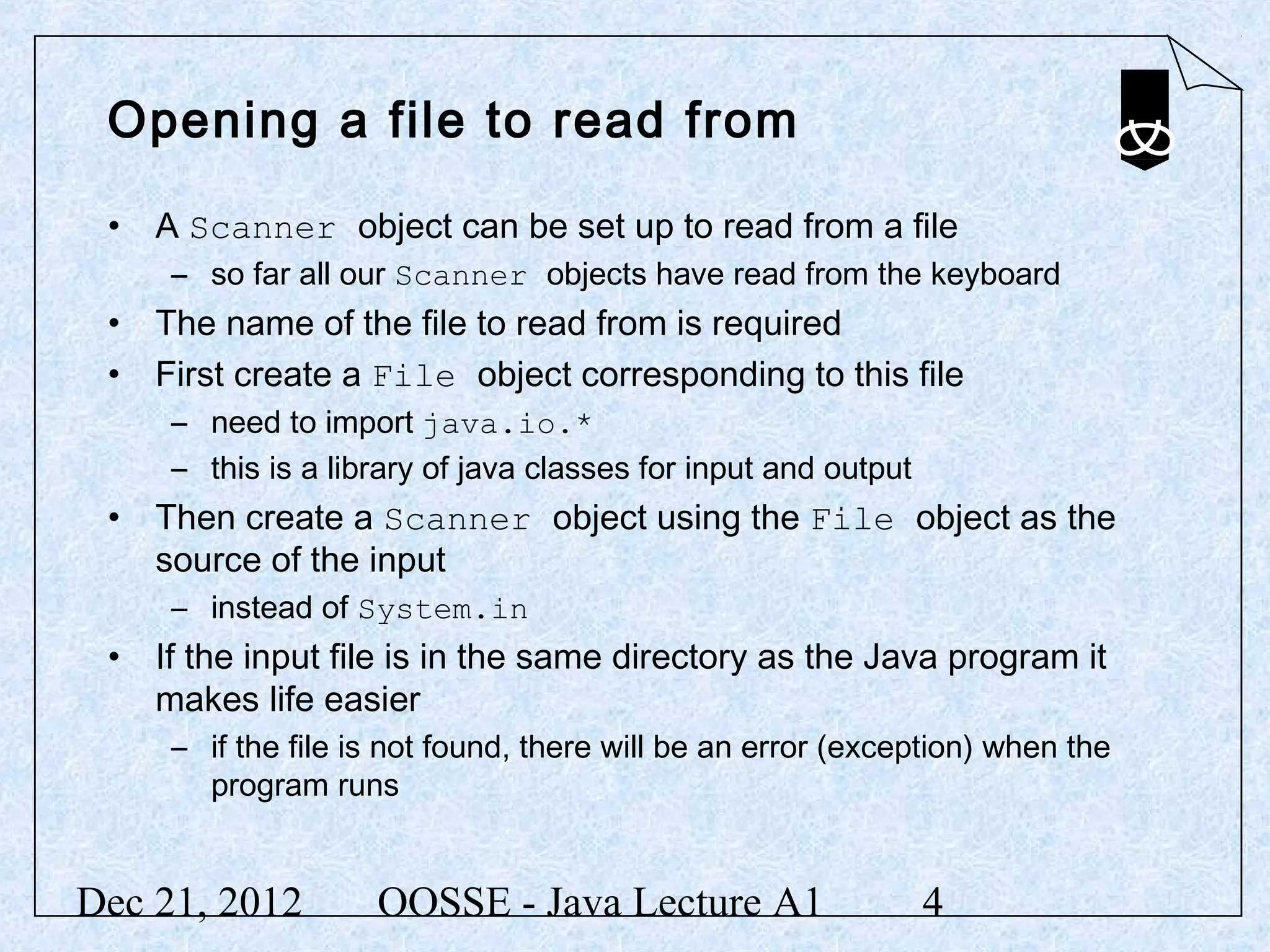
![Reading from a file
import java.util.*;
import java.io.*;
public class Payroll
{
public static void main(String args[])
{
String fName = "payroll.txt";
Scanner inFile = new Scanner(new File(fName));
……
or
Scanner inFile =
new Scanner(new File("payroll.txt"));
Dec 21, 2012 OOSSE - Java Lecture A1 5](https://image.slidesharecdn.com/14-filehandling-121220200704-phpapp01/75/14-file-handling-5-2048.jpg)
